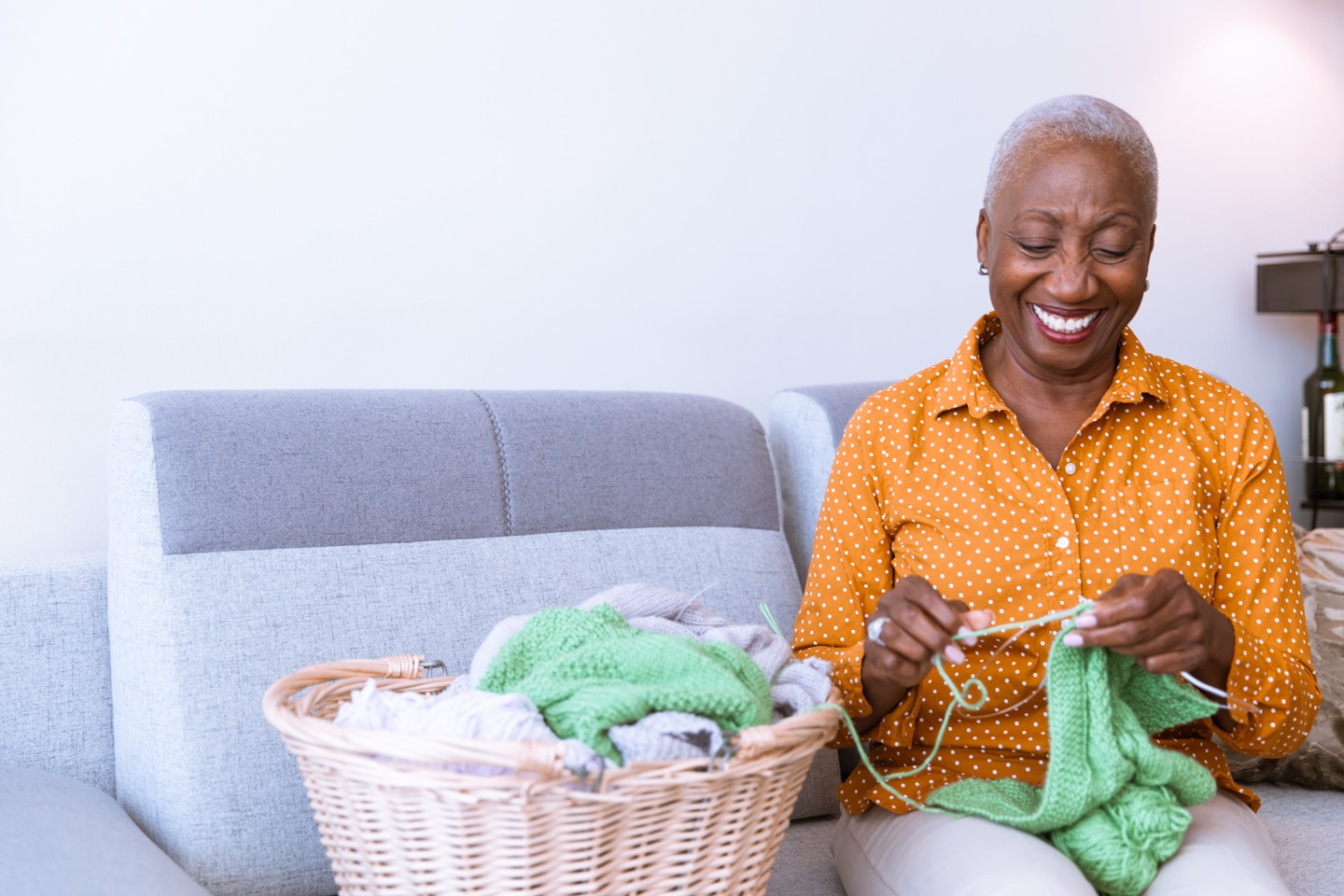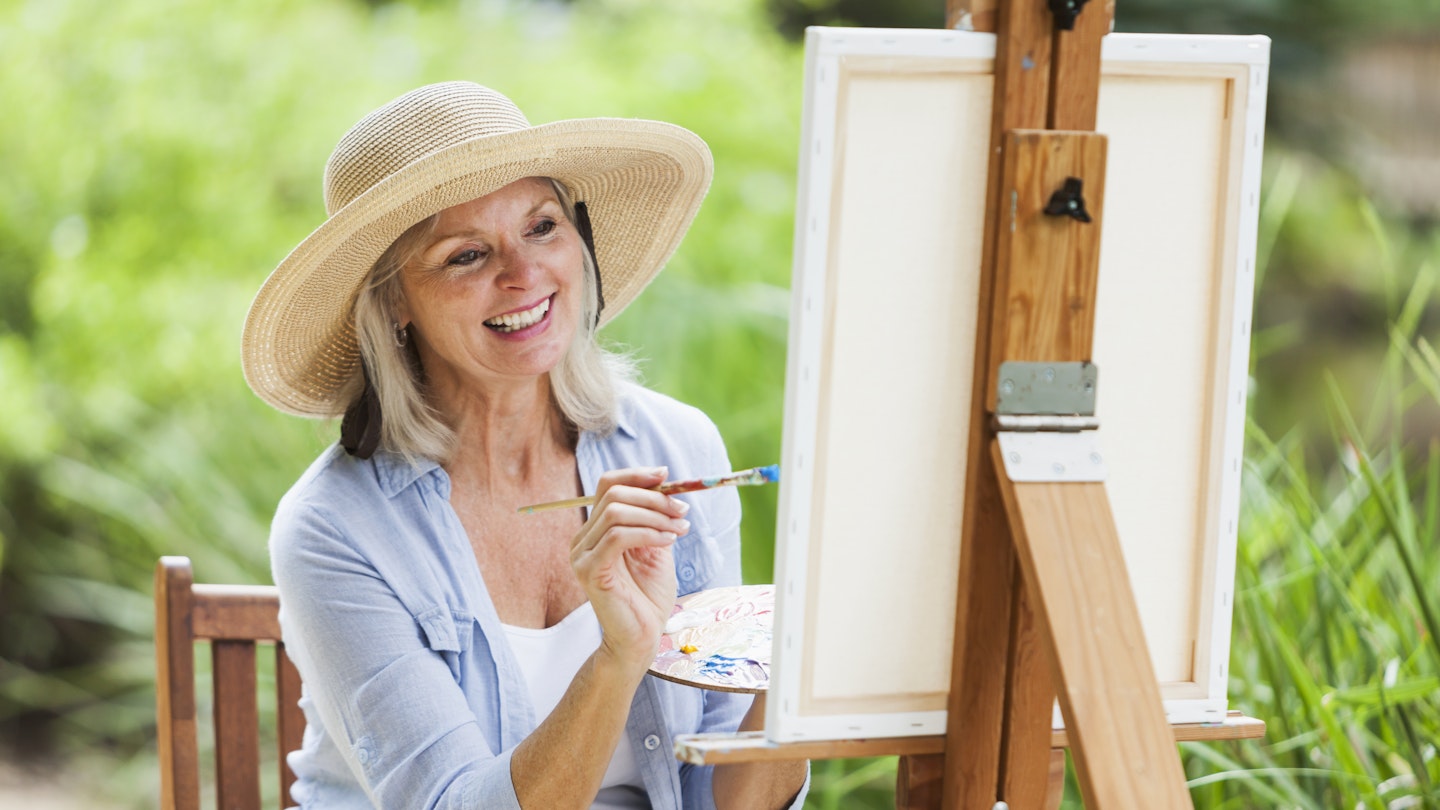In the hardest days of the recent lockdown, it seems something a bit miraculous happened. All of a sudden, splashes of paint started appearing on kitchen tables, pencils normally untouched were pulled from the back of the cupboard and craft books bought years ago were dusted off.
Whether it was a way of passing the time, a want to create something to give to far-away loved ones or to show support for the NHS and others, the lockdown saw the nation get crafty.
With a huge boom in the sales of arts and crafts materials, TV shows such as Grayson’s Art Club and the BBC’s Life Drawing Live saw many people get creative in a way they might not have done since schooldays. But as life starts to return to normal, it turns out there could be lots of benefits to keeping art in our lives or picking it up if you haven’t already.
That’s because recent research suggests creating art, whether that’s painting a picture, doing paper craft, knitting or even something as simple as doodling can have an incredible impact on our minds and moods.

For a start, art lowers stress. One American study left 39 adults in a studio with paper, clay, collage and pens and asked them to create whatever they wanted. Before they started, all participants were tested for the level of the stress hormone cortisol. After 45 minutes of creating 75 per cent of the participants had significantly lower levels of cortisol.
Part of the reason experts think art can be so calming is that it involves repetitive rhythms, for example the brushing of painting, the back and forth of sketching or the under and overs of knitting. This kind of repetition harks back to soothing behaviours of being rocked as a baby and so can settle our minds.
What’s more as art is wordless, it’s thought to be a terrific tool to help people communicate feelings they might otherwise find hard to express.
It’s for all these reasons that art therapy is a growing practice, often prescribed to help people with mental health challenges.
Clare Brewer is an art therapist with years of experience in helping people who have faced past traumas resolve the challenges in their lives and find a more hopeful future. In the therapy sessions, her clients are encouraged to make whatever art they like and then explore what they’ve made to make sense of what it might say about their emotions or their difficulties.
“The act of creating art can almost rewire the neural pathways of our brain that might have previously been hardwired in response to some kind of adversity or trauma,” says Clare. She adds that as traumatic events are often stored as a sensory memory, because art reconnects us to our senses, it can tap into those memories that may otherwise be hard to unlock.
“In very simple terms making art also engages the right side of our brain, forcing the left side - also known as the thinking brain – to go offline for a bit. This means the stresses and anxieties your thinking brain deals with are paused or at least have their volume turned down while you create.”
In practice, Clare says she’s seen clients totally transform their lives through this practice. “It’s like seeing light bulbs come on for people and they’re suddenly able to make sense of the world,” says Clare.
While art therapy is a professional form of psychotherapy for people facing specific challenges, everyone can benefit from the therapeutic effects of art in their own homes.
“As children we all had the capacity to be creative,” says Clare. “But often we take on beliefs later that we can’t do it or are not good enough. You don’t need to be an artist to make art and the benefits of being in the moment, learning or rediscovering a new skill and creating a product at the end of it are incredible.”
Did you know?
The brain benefits of art aren’t just to do with mood. New research revealed making art could delay or even avoid the age-related decline of certain brain functions. Experts believe this is because creative hobbies build connections in the brain which strengthen our ‘psychological resilience’ in other words helping us fight off memory loss.
It’s a fact!
Doodling can improve our focus, concentration and ability to remember information. In one study, people who were encouraged to doodle while listening to a list of names being read out were able to remember 29% more information in a surprise quiz later than those who didn’t
How to grow your art habit
Take a free lesson – There are loads of brilliant art tutorials online. For our favourite, search ‘Pascal Anson’ in youtube.co.uk. Or for a book try Key to Drawing by Bert Dodson.
-
Be inspired – Look round the Louvre or mosey round MoMA from your living room to be inspired by the greatest ever artists. Visit artsandculture.google.com
-
Just start somewhere – Scribbles are a good start so simply put your pencil in the middle of a blank page and create loose lines and loops. When you’ve filled the page, sketch or colour in any obvious shapes you see. Then when you’re ready to move on, sketch what’s outside your window, depict the room you’re in or recreate a family photo.
